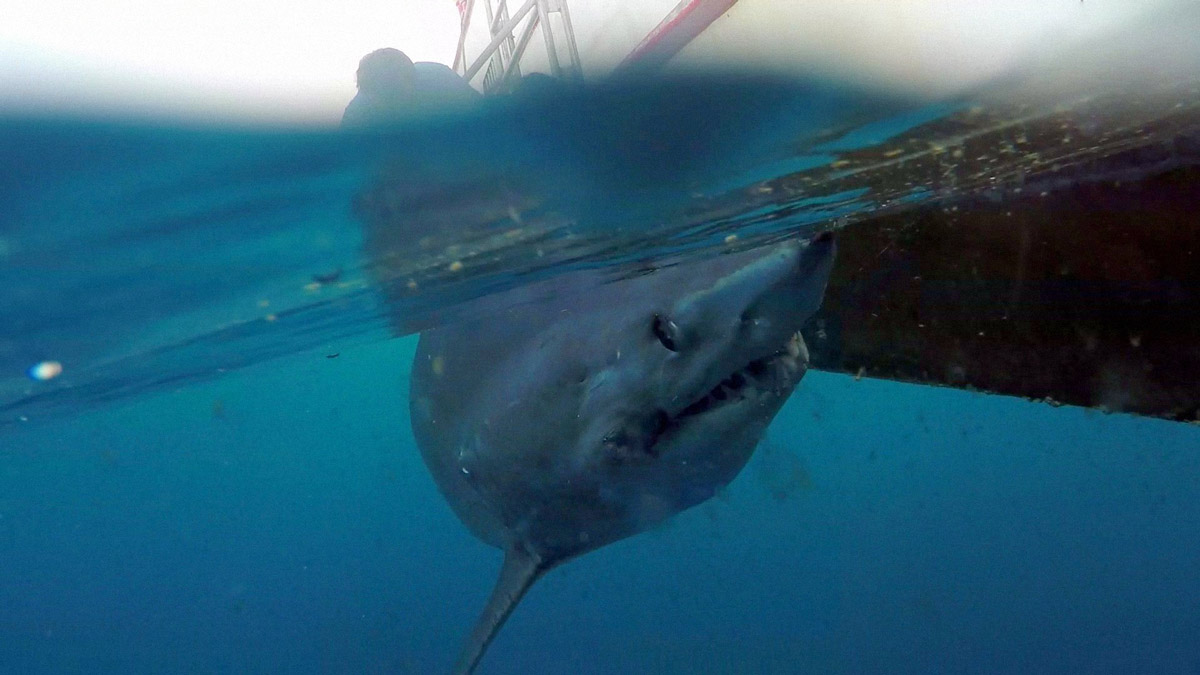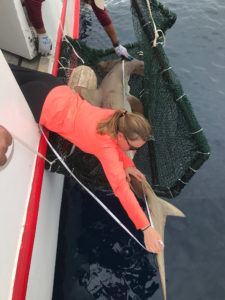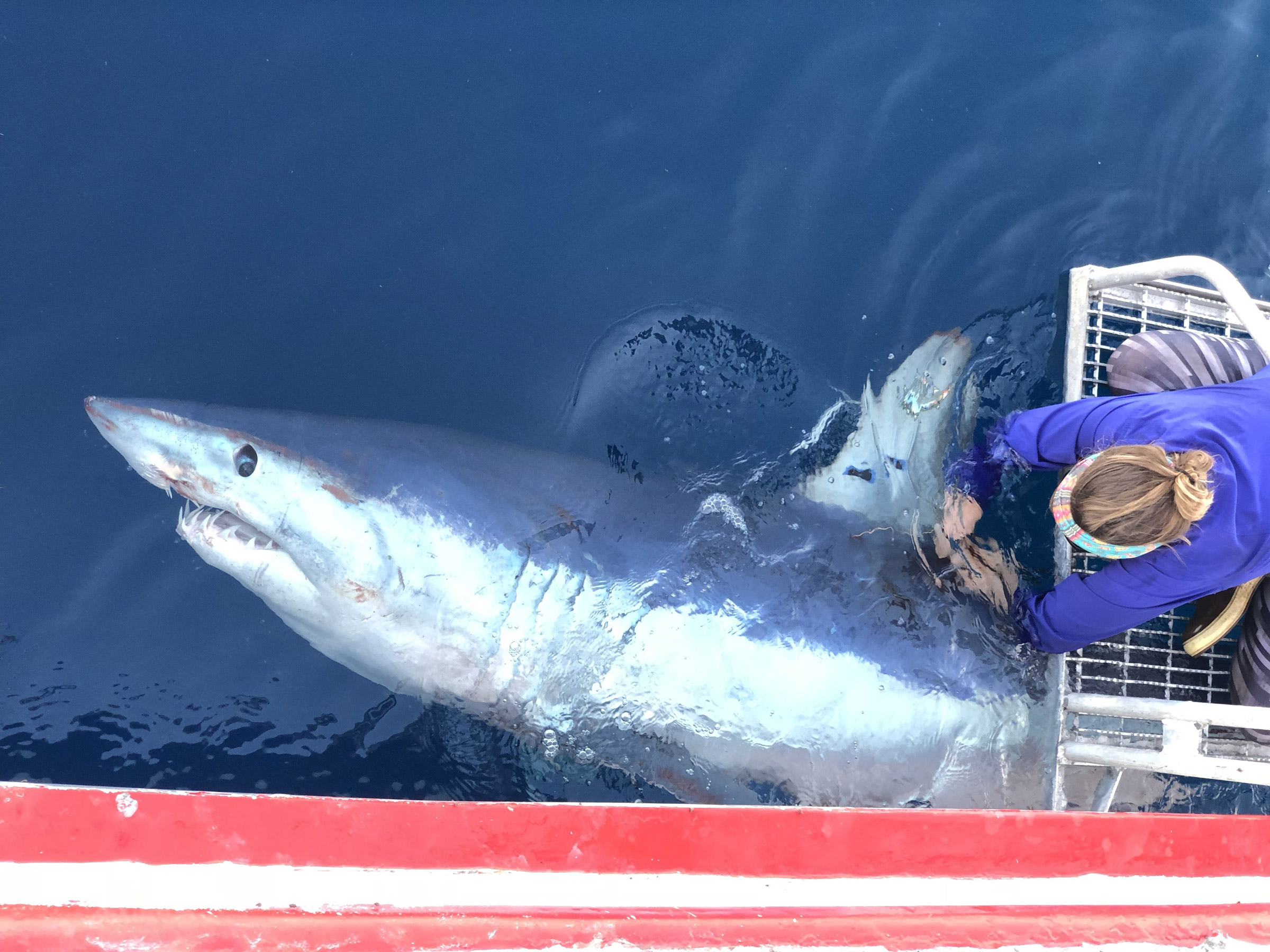By Erin Chesnut | Photos courtesy of Center for Sportfish Science and Conservation
Adrift for seven days. One hundred miles from shore. Followed by a shark. Not an ideal scenario for most people, but for Kesley Gibson (Martin ’12), it was a dream come true.
Gibson, originally from Martin, is now a postdoctoral research associate in the Center for Sportfish Science and Conservation at Texas A&M University-Corpus Christi’s Harte Research Institute for Gulf of Mexico Studies.

“I am an artificial reef ecologist with a specialty in sharks,” she says. “I study about marine fisheries and how those species use their habitat(s) and what their migration patterns are.”
After earning her bachelor’s degree in biology from UT Martin in 2012, Gibson went on to complete a master’s degree in environmental science from Troy University in Alabama and her doctoral degree at Texas A&M University-Corpus Christi.
“I don’t think I could have picked a better institution than (UT) Martin. It’s a small enough campus that faculty know your name when you walk in and you have a problem, or you want to get experience with undergrad research. That’s doable. You’re not having to compete against thousands to do that. You have that ability to do specialized projects and get that experience,” she says.
Gibson spent many childhood vacations at the beach, and her father, a geology professor, nurtured her love of the ocean and the creatures that live in it. Later, as an undergraduate, she was able to test being a marine biologist through UT Martin’s association with the Gulf Coast Research Laboratory in Ocean Springs, Mississippi.
“I think (UT) Martin has positioned itself and made the right connections to help its students figure out what they want to do and give them the support to get there,” she says.

And “there”—for Gibson—is adrift in the ocean followed by a shark. Her week at sea was part of a research study featured on Discovery Channel’s Shark Week in 2017 during an episode called “The Lost Cage.” While the rest of the team of marine biologists hoped to discover if any sharks would follow a drifting artificial habitat connected to their raft, Gibson used the experience to learn more about the habits of the shortfin mako shark.
“This is the shark that you see on Shark Week all the time that is flipping in the air and breaching. It’s one of the fastest sharks in the ocean,” she says. “We were filming for Shark Week when the largest shark I have ever seen was hooked, and she was a shortfin mako. At 11.5 feet, she was estimated to weigh close to 1,000 pounds, and we couldn’t let her go without finding out where she was going. Luck got me hooked on makos, but since then, the excitement and wonder has kept me going.”

The shortfin mako in the North Atlantic has been listed as “overfished and undergoing overfishing,” which means too many have been harvested to sustain the population.
“We’re still pulling out too many. Scientists did the math, and if we stopped and no shortfin mako sharks were caught, we have a 50 percent chance of the population recovering by 2070,” Gibson says.
A doctoral candidate at the time of the Shark Week filming, Gibson’s dissertation focused on movement patterns and habitat use for various species, including the shortfin mako. Now she spends her time tagging mako sharks in the Gulf of Mexico and learning where they go, why they migrate and what they need in an ideal habitat.
“We’re looking at where these sharks are going because, even if we can protect them in U.S. waters, they are traveling through other international jurisdictions. Just because we may have a stricter regulation here, what are they being subjected to there? Why are they leaving here? What are we not providing here? Why do they need to go somewhere else?” she says.

Photo Credit: Devon Massyn
So far Gibson and other researchers have found a potential mating group in the Gulf of Mexico, off the coast of Texas. Some females and smaller male sharks remain in the area, while larger male sharks leave and return year after year.
“We’ve started noticing bite marks down the body of the females that we were catching, which would suggest that the sharks are mating here, which would indicate that this could be an essential fish habitat—something that they need for their species to survive,” she explains. Once Gibson and her fellow researchers can determine what makes a habitat ideal for the shortfin mako, they can work to locate and protect those areas and the fish that frequent them.
Gibson says there are two components to preventing the extinction of the shortfin mako population: first, to conserve the type of environment they need to grow, thrive and multiply, and second, to promote sustainable harvesting of the species.
“We can’t really encourage them to return other than just making sure that we’re maintaining and conserving the habitat that they need. What we can do is try to help protect the individuals that are coming here,” she says. “Right now, shark science is still in its infancy. You think about all the things scientists discover every year, and we still don’t know where sharks go half the time.”

As far as preventing overfishing, Gibson says the United States does not have a commercial fishery for shortfin mako sharks; however, many other countries do. The shortfin mako, among other sharks, are considered a delicacy and are harvested for their fins to make shark-fin soup.
“Here in the United States, shortfin makos are predominately caught as a by-catch in the tuna fishery or the swordfish fishery, but because they are so highly prized, they are retained once they are on the longlines. Recreationally they are targeted because they are very acrobatic when they jump. You hook them, and they do the flips, and everybody enjoys that fight. Unfortunately, a lot of people do still retain them because they are good to eat.”

However, Gibson hopes that, if she and her fellow marine biologists can advocate for the conservation of additional and similar habitats that support the shortfin makos, the species will be able to thrive once again.
“Ideally, if I had my way, harvest would only be for sharks that were dead on haul-back—so, sharks that didn’t survive the fishing process. It would be a catch-and-release fishery like the white shark fishery is, at least until we can get the population stable and flourishing,” she says. “I’m all for harvesting, but you should harvest sustainably, and we’re currently not able to do that.”
Until then, Gibson will continue to tag and track sharks in the Gulf with the help of local fishermen and fishing captains who encourage their customers to return caught sharks to the sea.



